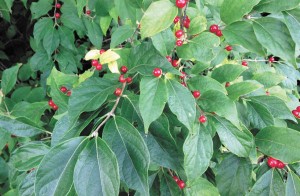INDIANAPOLIS — Reconnecting to Our Waterways (ROW) recently launched a comprehensive effort to help Indianapolis residents remove harmful invasive plant species and replace them with beneficial native plants in their backyards and communities.
The Residential Invasive Species Removal Guide, along with a new educational video and how-to cards, are now available to make eradicating invasive plants easier for residents, improving local wildlife habitats, decreasing flooding in communities, and preventing harmful stormwater runoff from flowing into Indy waterways with native plant alternatives. Visit ourwaterways.org/elements/ecology/invasives/ for photos and more information about specific plants.
Invasive species are plants and animals that have been introduced in places where they are not native. They become a nuisance because they spread quickly and cause harm to our environment, economy or human health. Invasive species do not have a healthy check on their growth from other plants and animals, so they tend to take over from native plants that provide food and other resources for local animal species. Historically, these harmful plants were seen as exotic and ornamental. Now, the importance of removing these species is known due to their rapid spreading, excessive need for water and limited ecological contribution to birds and wildlife.
Neighborhoods across Indianapolis are seeing the benefits of invasive removal and native plantings. In the Millersville neighborhood along Fall Creek, community member Matt Benson attests to the challenges that invasives create. “Invasive Bush Honeysuckle had taken over the banks and woodlands along Fall Creek in Millersville,” said Benson. “It strangled out native plants and trees and seriously limited access to the creek. This invasive plant also enabled increased erosion. We worked with a variety of partners and volunteers over several years to eradicate Bush Honeysuckle in the Millersville Preserve, along the Fall Creek Greenway and the banks of Fall Creek.”
Native species are adapted to support local life forms as well as grow deep roots that soak up and filter rainwater of harmful contaminants in the waterways. Replacing invasive plants with native plants creates beautiful, easy-to-maintain landscapes in yards while also providing habitats for crucial Indiana species, all while reducing harmful pollution runoff to Indy’s waterways.
On Indy’s Near Eastside along Pogue’s Run waterway, neighbors are also seeing the benefits of planting native species. “The biggest surprise from adding native plants to park spaces and my yard is the large number and variety of bees, butterflies and birds that are drawn to the nectar and seeds,” said Jen Eamon of Windsor Park neighborhood.
“ROW’s collective partners created these easy-to-use, step-by-step tools to fill a gap in information available for the average citizen who is interested in small efforts to improve their yards and make positive gains for Indianapolis and its water resources,” said Julie L. Rhodes, ROW’s Collective Impact Director.



